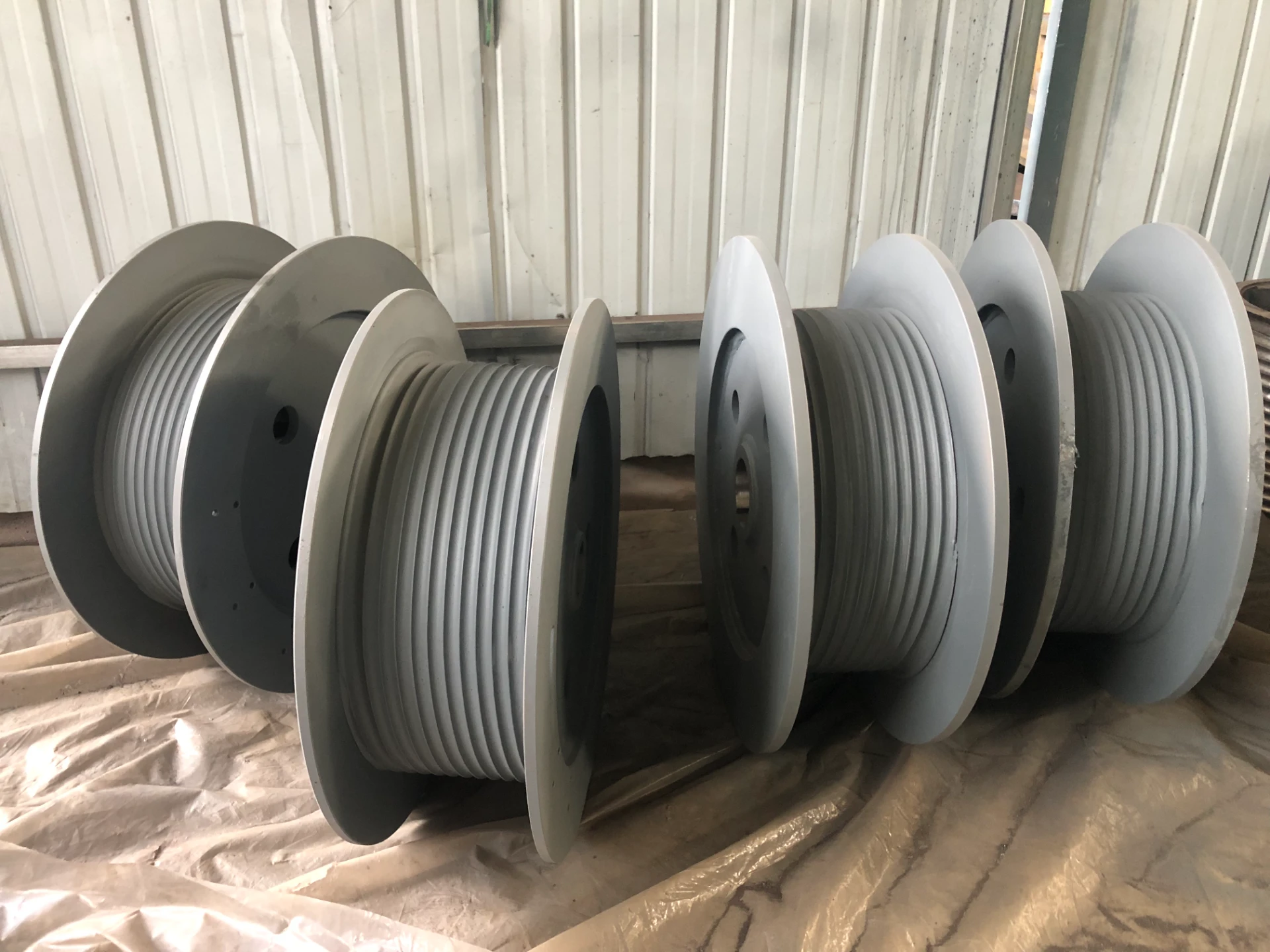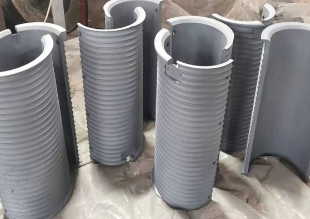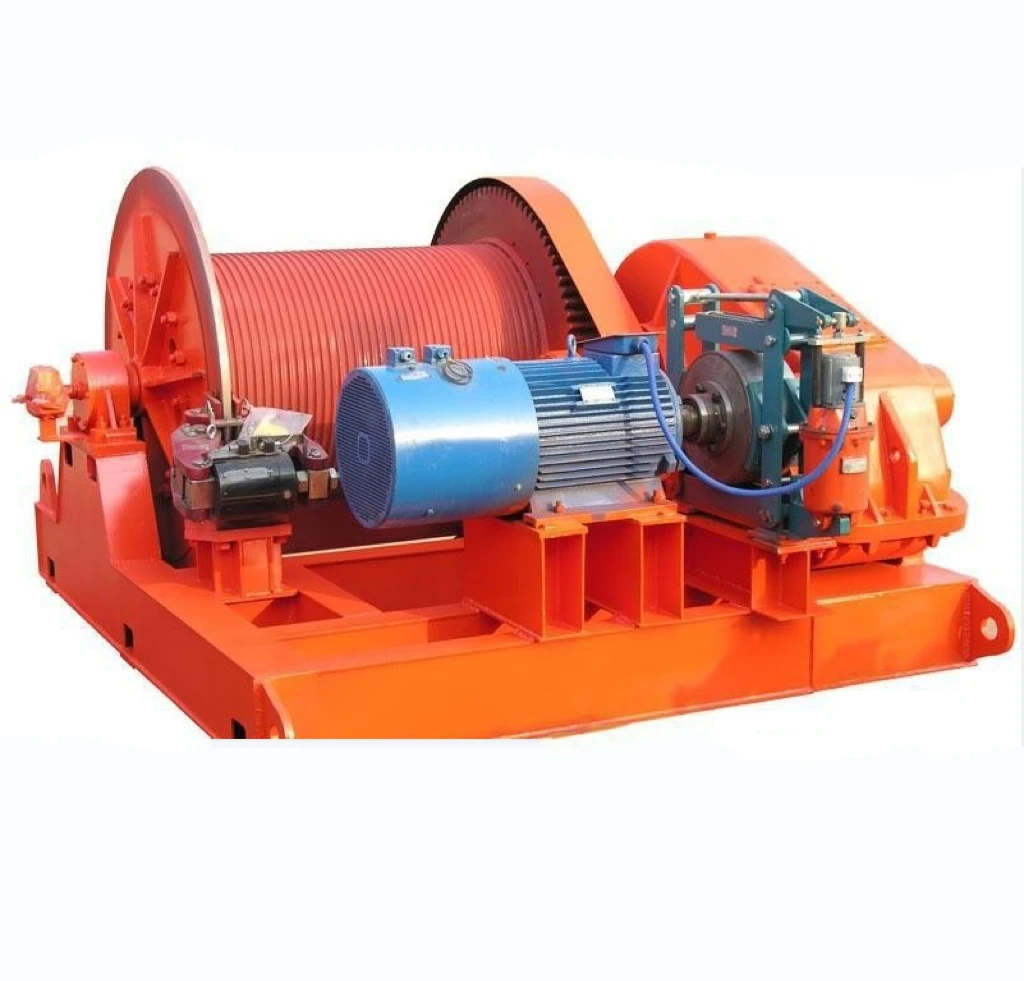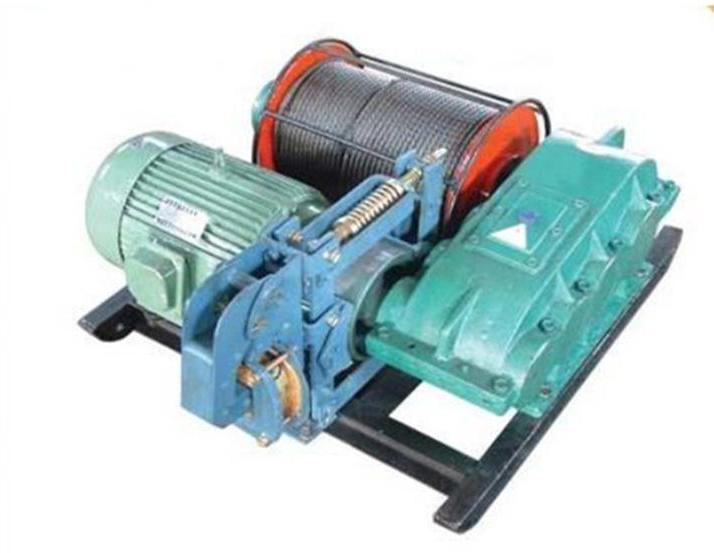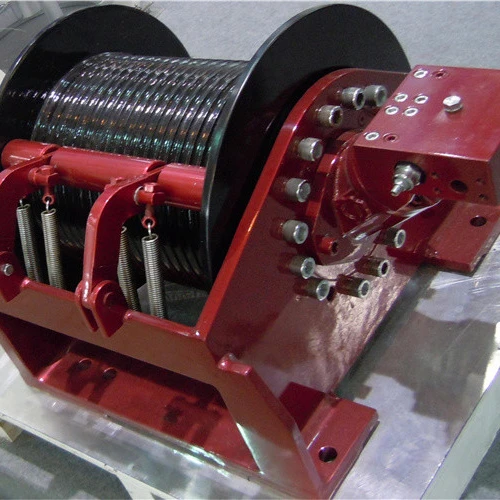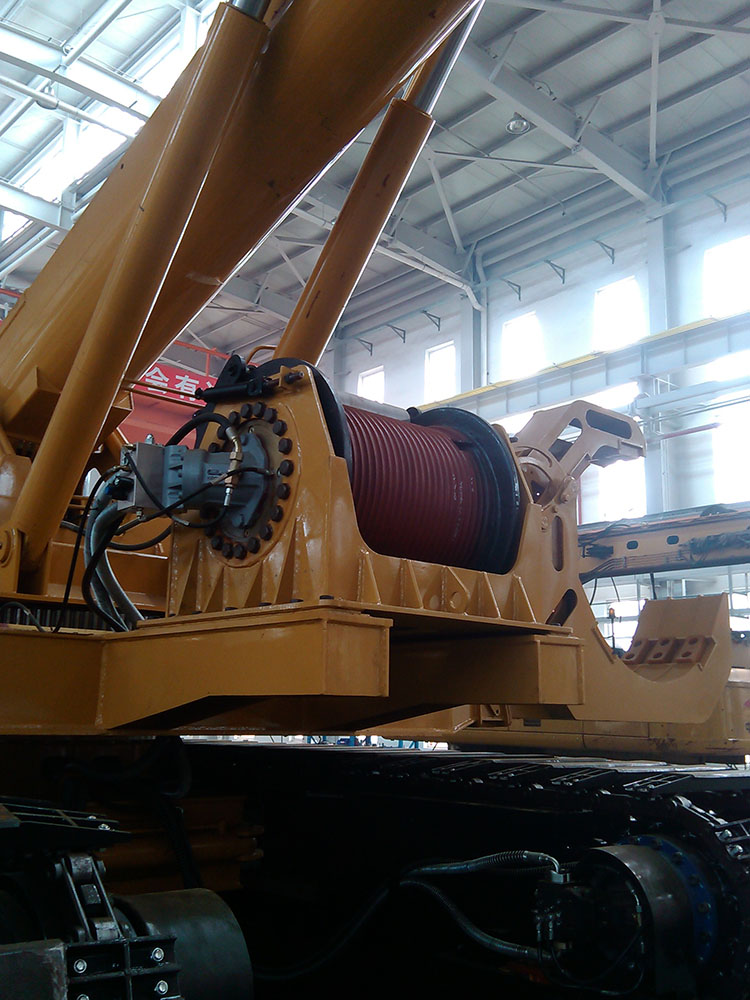High Speed Hydraulic Winch – Power, Speed, and Precision for Global Industries
What is a High Speed Hydraulic Winch and Why Should You Care?
In the fast-moving world of industrial lifting and marine operations, a high speed hydraulic winch can be a game-changer. On the surface, it’s just a piece of equipment that reels cables faster than traditional winches, but its global impact stretches far beyond merely pulling or hoisting heavy loads. Whether in offshore oil platforms, rescue missions, or even large-scale construction projects, understanding the nuances of these powerful devices means improving safety, efficiency, and reliability — all critical factors globally.
As industries worldwide pursue faster, safer, and greener solutions, the demand for rapid deployment equipment like these winches has surged, making them essential for modern infrastructure and humanitarian initiatives alike.
Why High Speed Hydraulic Winches Matter Globally
The International Maritime Organization (IMO) reports that global offshore operations will continue to accelerate, requiring tools that keep pace. Meanwhile, the United Nations highlights increasing natural disasters and humanitarian needs that demand swift, reliable material handling. High speed hydraulic winches meet these trends perfectly.
Here’s a quick snapshot: the global market for hydraulic winches is growing steadily at over 5% annually, driven by sectors like oil and gas, marine, mining, and emergency response organizations. In an industry rife with hazards, the ability to rapidly deploy and retract cables while maintaining precise control — even under heavy loads — is not just a convenience but a safety imperative.
That said, these winches also tackle a core challenge: combining speed with strength without sacrificing durability. This solution is essential for everything from rapid salvage operations after shipping accidents to deploying subsea equipment thousands of meters below sea level.
Defining the High Speed Hydraulic Winch
If you’re new to the term, a high speed hydraulic winch is essentially a motor-driven spool system powered by hydraulic pressure that winds or unwinds cable or rope quickly and precisely. Unlike traditional electric or manual winches, these leverage fluid power — providing a smoother, more forceful, and often faster method of pulling heavy loads.
These winches come equipped with multi-stage planetary gears and variable displacement pumps that grant operators precise control over speed and torque. It’s this hydraulic mechanism that makes them ideal in heavy-duty scenarios where electricity is unreliable or hazardous.
Their relevance extends beyond industrial jobs: humanitarian organizations deploying relief supplies post-disaster appreciate the ability to rapidly remove debris or move aid equipment quickly, often where electrical power isn’t available.
Core Components of a High Speed Hydraulic Winch
Durability Under Pressure
Many engineers say the toughest test of a hydraulic winch is its resilience in salty, abrasive, or extreme environments. Components like corrosion-resistant alloys and sealed hydraulic lines keep them running even when conditions are less than ideal.
Speed and Control Balance
What’s crucial here is the delicate balance between rapid cable retrieval and maintaining steady tension — especially when lifting fragile or sensitive loads. Advanced valve systems let operators modulate this speed easily, which is why they're preferred for complex lifting tasks.
Power-to-Weight Ratio
Oddly enough, some of the fastest winches are also surprisingly compact thanks to optimized hydraulic designs. This means you get robust pulling power without lugging around prohibitively heavy equipment.
Customization and Scalability
From small-scale construction rigs to massive offshore cranes, these winches come in multiple sizes and can be customized with features like remote control, automated safety cut-offs, or load monitoring systems.
Energy Efficiency
It might seem counterintuitive, but hydraulic winches can be more energy-efficient than electric ones if integrated with energy recovery systems that recapture lowering loads.
Mini takeaway:
The secret sauce of high speed hydraulic winches lies in engineering that combines speed, power, durability, and control — delivering consistent performance in challenging settings.
Global Applications: Where Speed Meets Strength
The high speed hydraulic winch shines in diverse fields worldwide:
- Offshore Oil & Gas: Rapid deployment of drilling lines and anchor systems amid turbulent weather.
- Emergency Response: Debris removal and quick hoisting during earthquake and flood relief.
- Mining: Extracting raw materials while ensuring safe cable handling in deep shafts.
- Marine Salvage: Recovering sunken vessels or cargo with precise load management.
- Remote Construction Sites: Efficiently lifting heavy materials where electricity access is limited.
For example, after the 2018 Indonesian earthquake, aid organizations credited high speed hydraulic winches with significantly slashing transport time of vital equipment up steep terrains where other machinery stalled.
Advantages and Long-Term Value of High Speed Hydraulic Winches
Let’s be honest: speed alone isn’t enough. The whole point is to combine swiftness with reliability, safety, and cost-effectiveness.
- Improved Safety: Precise control reduces human error and stops overload incidents.
- Lower Maintenance: Durable components extend service intervals, cutting downtime.
- Operational Efficiency: Faster cable handling speeds up project timelines, saving costs.
- Environmental Impact: Advanced hydraulics paired with energy recovery reduce fuel consumption.
- Social Impact: Quicker rescue and infrastructure rebuilding foster community resilience.
Many operators will tell you trust in their winch system equates to peace of mind — when your winch works, so does your entire operation.
Product Specification Table
| Specification | Typical Value |
|---|---|
| Line Pull Capacity | Up to 50,000 lbf |
| Speed (Cable Retrieval) | Up to 40 m/min |
| Motor Type | Hydraulic, axial piston |
| Gear Ratio | 10:1 to 50:1 (multi-stage) |
| Weight | 600 - 2500 kg (varies by model) |
| Control Features | Remote control, variable speed valve |
Comparing Global Vendors of High Speed Hydraulic Winches
| Vendor | Product Range | Key Features | Typical Lead Time | Innovation Highlight |
|---|---|---|---|---|
| LBS Winch Co. | 5 models: 5k-50k lbf | Advanced remote control, modular design | 6-8 weeks | Energy recovery cap. |
| HydroLift Systems | 3 models: 10k-40k lbf | AI-based load monitoring | 10-12 weeks | Smart safety cut-offs |
| Maritime Tech Inc. | 7 models: 5k-60k lbf | Corrosion-resistant coatings | 8-10 weeks | IoT-enabled diagnostics |
Looking Ahead: Innovations on the Horizon
Industry insiders are buzzing about integrating digital control systems powered by IoT, machine learning, and green hydraulics that reduce environmental footprint. Imagine winches that self-monitor wear and tear and schedule their own maintenance before a failure happens. Frankly, that kind of predictive maintenance could save countless hours and dollars.
There's also a push toward lighter, stronger composite materials for winch drums and frames, which we might see becoming standard in the next decade. Plus, hybrid power systems combining electric-hydraulic drives are gaining traction for sites aiming to cut emissions.
Challenges and How to Solve Them
Even the best high speed hydraulic winches aren’t without snags. Hydraulic leaks, complex maintenance, and high upfront costs are typical concerns. However, improvements in sealing technologies and modular component design can reduce downtime and ease repairs.
Expert technicians often recommend thorough on-site training and adopting remote diagnostics to mitigate issues before they escalate. Also, creativity in sourcing parts and local partnerships can help overcome logistic hurdles in remote operations.
FAQ: Quick Answers About High Speed Hydraulic Winches
1. How fast can a high speed hydraulic winch actually retrieve cable?
Typical retrieval speeds range from 20 to 40 meters per minute, depending on load and model. This greatly outpaces many traditional electric winches, improving turnaround times on jobs.
2. Are hydraulic winches safer than electric winches?
Hydraulics offer smoother, more controllable motion under heavy loads, reducing risk of abrupt stops or cable snaps. However, proper maintenance is key with either system.
3. Can these winches be customized for special applications?
Definitely. Many vendors offer modular designs with options like remote controls, load sensing, and specific cable capacities to fit unique project demands.
4. What environments are these winches best suited for?
They excel in harsh environments—offshore saltwater conditions, mining shafts, emergency zones—where electrical equipment may fail or be unsafe.
5. How do maintenance costs compare with traditional winches?
Although initial costs tend to be higher, their longer lifespan and reduced downtime typically balance the scales over time, making them cost-efficient in the long run.
Wrapping It Up: Why Invest in a High Speed Hydraulic Winch?
In real terms, a high speed hydraulic winch is more than just a piece of kit — it’s a strategic asset that delivers speed, precision, and confidence under pressure. Industries and humanitarian efforts that depend on fast, reliable cable handling know it’s worth considering carefully.
Interested? Learn more at our website. Your project’s edge might just be a winch away.
References
-
Double Drum Hydraulic Winch – Durable, Efficient Load Handling SolutionsNewsNov.25,2025
-
Hydraulic Drum Winches: Powering Heavy Lifting with Precision and DurabilityNewsNov.24,2025
-
Hydraulic Driven Winch – Reliable Heavy Lifting Solutions for Industry & ReliefNewsNov.24,2025
-
Hydraulic Crane Winch – Powerful & Precise Heavy Lifting Solutions | LBS WinchNewsNov.23,2025
-
Electric Over Hydraulic Winch: Efficient, Durable Lifting Solutions for Modern IndustryNewsNov.23,2025
-
Hydraulic Logging Winch Guide | Global Applications & InnovationsNewsNov.22,2025


